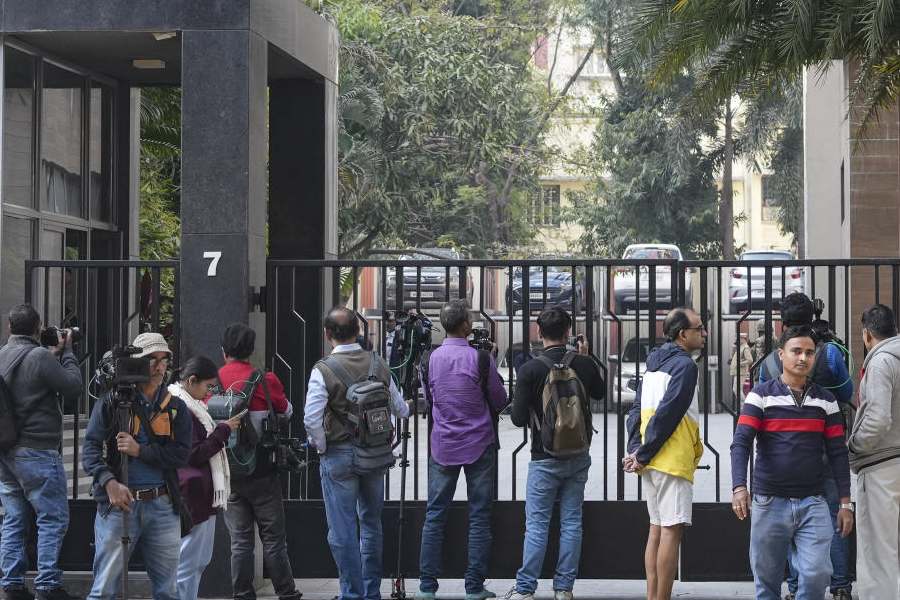The Babri Masjid was never visible from the main Faizabad-Gonda road that cut through Ayodhya. Tucked away in the bylanes of the temple town, it snuck up on you as you turned the corner perched atop a hill, the besieged edifice with its three domes reaching up to the sky took you by surprise.
The Ram Mandir that is to be built on the very spot that the Babri Masjid stood is expected to be so large that it will be visible from the whole of Ayodhya and miles around. But will it match the spirituality of the temple inside the mosque?
My first visit to the 450-year-old mosque was in the summer of 1989, when the court mandated that a barbed wire fence be erected to protect the shrine. As I walked through the graveyard adjoining the masjid, into the courtyard past two middle-aged guards chatting in one corner oblivious to any possible security threats, it was clear that the building was very obviously a mosque but for all practical purpose it was a temple.
On the chabutra in the outer courtyard sat some sadhus singing bhajans, while inside the main building under the three domes was the idol of Ram Lalla (Infant Ram) with the middle-aged priest Satyendra Das performing puja for the couple of devotees who had come for darshan. Despite the dispute over the title deeds of the land, the temple/mosque had a serenity that is associated with a place of worship of any religion.
This was more than year before then BJP president L.K. Advani had taken out his rath yatra from Somnath to Ayodhya declaring “Mandir wahin banayenge” and launching the Ramjanmabhoomi movement that culminated in the destruction of the Babri Masjid and paved the way for the electoral success of the BJP. Until then, very few Hindus had even heard of a dispute over Ram’s purported birthplace or Muslims heard of Babri Masjid.
Ayodhya itself was a dusty, sleepy town made up of more than 6,000 temples — big and small — all devoted to the worship of Lord Ram. It did not have the glamour of Varanasi with its mighty Ganga and the burning ghats, the allure of Haridwar, nor the footfall of lakhs of Indian pilgrims and foreign tourists that both these pilgrimage cities draw each year.
But what Ayodhya lacked, it more than made up for in pure and simple spirituality and devotion. Filled with mandirs, maths, ashrams and akharas home to thousands of sadhus, sants and mahants, the holy town had a slow pace devoted to only worship. In fact Ayodhya’s twin town of Faizabad, less than 6km away, the first capital of the Nawabs of Awadh, was the bustling district headquarters full of life.
The peace of both towns was shattered by the arrival of “outsiders” demanding the “liberation” of Lord Ram from the Babri Masjid. The locals then did not see the need for another Ram temple which would shatter their communal harmony and destroy their livelihood.
“This is a political movement brought here by outsiders. We don’t need another Ram temple, we have more than enough. We want peace and quiet,” said a flower seller outside Hanuman Garhi, the biggest temple in Ayodhya. “All this strife, riots and curfew has affected business badly, with devotees too scared to come here,” he told me on one of my umpteen trips between 1989 and 1992.
Even on December 6, 1992, it was lakhs of “outsiders” who took over Ayodhya and destroyed the mosque, bringing an end to the Ganga-Jamuna tehzeeb that Uttar Pradesh was so proud of.
With the foundation stone of the Ram Mandir being laid today, Advani’s dream will have finally come true, but ironically Advani finds himself dumped in the retirement home of the BJP, not even dignified with an invitation to the event. As the architect of the movement, ideally it should be Advani who should be performing the shilanyas but stabbed in the back by his own disciple, he has been left to sulk in Delhi.
In fact, none of the cast of characters that worked to bring about the “grand” Ram temple will be present on Wednesday. Most of them are dead or sidelined. The leaders at the event today are pygmies standing on the shoulders of their predecessors basking in their reflected glory. Covid-19 is a convenient excuse!
The “bhaviya” Ram Mandir envisaged by the Hindutva brigade will now definitely be completed in three-and-half years, in time for the next general election.
It will certainly be grander, taller, bigger, an architectural marvel, more expensive than any temple in the world with gold and silver bricks and studded in jewels, but will it please Lord Ram who chose the humble hut of Shabari over the palaces of yogis to eat the tasted berries the old woman offered him with true love and devotion?
The Ram Mandir may even become a tourist attraction as the first edifice of a Hindu India putting Ayodhya on the world map, but history will always remember it as the temple that was built on the debris of a criminally destroyed mosque.
Sajeda Momin is a senior journalist who was The Telegraph’s Uttar Pradesh correspondent from 1989 to 1993 and covered the Babri Masjid-Ramjanmabhoomi dispute











